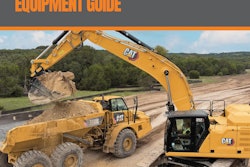The American Society of Civil Engineers stamped a near-failing grade of “D” on their 2005 Report Card for America’s Infrastructure, down from a “D+” in 2001.
The Report Card assesses 12 infrastructure categories. While there has been some improvement in aviation and schools categories from the 2001 Report Card, ASCE’s analysis reveals conditions have remained the same for bridges and dams and worsened for roads, drinking and wastewater facilities, navigable waterways and transit and energy systems.
American Road and Transportation Builders Association President Pete Ruane said the results shouldn’t be surprising to anyone who travels the nation’s highway, bridge and transit systems. He said the next report card would likely be a failing grade if the federal government doesn’t allocate increased funding soon.
Should the government allocate more money to infrastructure construction, contractors and construction equipment manufacturers would likely benefit.
ARTBA estimates a $60 billion federal investment is needed to improve current highway conditions. ASCE trumps that amount by suggesting the government spend at least $1.6 trillion during a five-year period to bring current infrastructure grades up to an “A.”
“We need to establish a comprehensive, long-term infrastructure plan as opposed to our current `patch and pray’ method to ensure a better quality of life for everyone,” said ASCE President William Henry.
Among the report card categories of interest to the construction industry, roads – with a grade of “D” – seem to be in the most critical state.
To remedy the road situation, both ARTBA and ASCE are calling for reauthorization of the Transportation Equity Act for the 21st Century. The most recent extension of the six-year federal funding program is set to expire in May. Interest groups are also calling for reformed use of the Highway Trust Fund that is being used to support the nation’s surface infrastructure program.
Other solutions proposed by ASCE include private-public partnerships and multi-year capital and operating budgets.
The nation’s bridges – received a grade of “C,” which was the same as in 2001.
Between 2000 and 2003, the percentage of the nation’s 590,750 bridges rated structurally deficient or functionally obsolete decreased slightly from 28.5 percent to 27.1 percent, according to ASCE. However, one in three urban bridges was classified as structurally deficient or functionally obsolete.
ASCE estimates it will cost $9.4 billion a year for 20 years to eliminate all bridge deficiencies, with long-term underinvestment being compounded by the lack of a federal transportation program.
An advisory council of 24 civil engineers representing a variety of civil engineering disciplines assessed the 2005 Report Card. Each category was evaluated on the basis of condition and performance as reported by federal sources; capacity versus need; and current and pending investment of state, local and federal funding versus need.
This is the third time ASCE has issued an infrastructure report card, having compiled one in 2001 and 1998, with an interim report in 2003.
Patrick Beeson can be contacted at [email protected].










